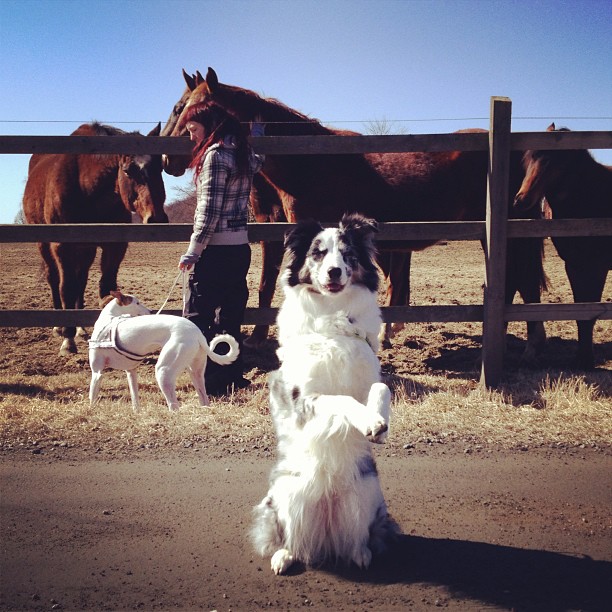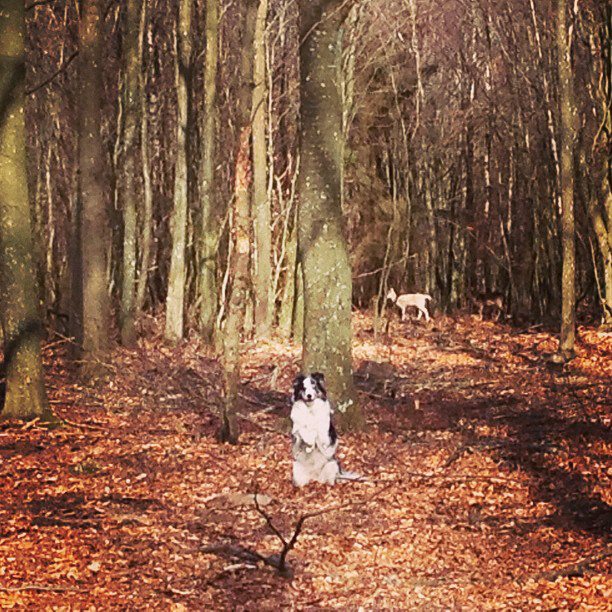By Emily Larlham
Generalizing simply means, teaching your dog that when you ask him to perform a behavior, it means the same thing regardless of the scenario or environment you are in. Dogs do not generalize as well as us humans do, so it can make it very difficult for us to understand what they are going through when we ask them to do a behavior they already know in a scenario that they are unfamiliar with. An example of how dogs do not generalize well is: You may think to yourself, “my dog knows sit”. But if you stand with your head buried in the corner of the room and ask your dog to sit, he most likely won’t. Also, if your dog only fetches a ball and you throw your car keys for your dog and say “Fetch”, most likely your dog will look confused and not pick them up. Sometimes simply taking two steps to the right in the training session when your dog is learning something new, will throw your dog off and make it seem like he has no clue as to what you were asking for.
To not get stuck on the same level of behavior and to make sure that your dog can generalize well, you need to be increasing criteria constantly and begin generalizing a behavior to other scenarios as soon as you can. Once you have gotten a behavior on cue, it’s time to move on to having your dog perform the behavior on different surfaces, in different locations, with different distractions, and in different positions in relation to yourself.
You don’t have to find generalizing daunting. You can generalize behaviors to the level you need. Perhaps you don’t need your dog to sit 50 feet away from you, or sit while you are on the roof and the dog is in the living room when you ask him. You can simply proof to the level you need, and then have no expectations for your dog to preform the behaviors in situations you have not yet trained in. I would recommend however, ALWAYS proofing emergency behaviors as much as you can, for example your recall. Teach your dog to generalize the recall to all situations by proofing as many training scenarios as possible. Can your dog come back when someone else is feeding him? Can he come when there is a rabbit in the field, when he is playing with other dogs, when he’s running, eating cat poop or during loud noises?
Once you have generalized a large quantity of behaviors to many different scenarios, your dog can start to do it on his own, especially if the behaviors are similar. For example, if your dog can sit when asked on grass and concrete, then learning to “Sit pretty” when asked on grass and concrete will be slightly easier to generalize than if he didn’t have any prior generalization skills.



Generalizing Tips
- With tricky behaviors, practice the behavior in the place you first trained it right before you ask for it in the new location to keep the behavior fresh in your dog’s mind.
- Use higher-level rewards.
- Act more excited about training in the new place. DON’T just assume your dog should do it. Mix the new behavior with play and easy behaviors that your dog knows well.
- Practice attention games, to get the ball rolling. When you have your dog’s full attention, you can start generalizing the new behaviors.
- Wait until your dog is calmer and less distracted when in a new environment by letting him have time to adjust, before quizzing him. You can also get your dog to settle in the new environment before doing the training session, to help him calm down.
- Lower criteria when you begin to generalize a behavior to a new environment or different position in relation to you. Reinforce him for offering the behavior even if it is sloppy at first. You can also remind your dog what behavior you wanted by luring the behavior with a treat in the same way you trained the behavior initially, to remind your dog which behavior you are looking for.
- For a Chihuahua, sitting in long grass can be very unpleasant. Imagine how long the blades of grass are in relation to the dog. To teach a dog that is not fond of grass to sit on grass, you can first train him to sit on a small mat, and then bring the mat to a grassy area. Then you can get your dog to sit on the mat, and then take away the mat and ask him to sit. Chances are he will be more likely to sit in just the grass after practicing the highly reinforced behavior of sitting on a mat. You can also set up the training plan so that sitting on grass gets a treat every time in the beginning of the generalization process, while sitting on the mat doesn’t always get a treat. That way the dog will start to find sitting on the grass a better predictor of a treat and be more motivated to sit on the grass than on the mat.
